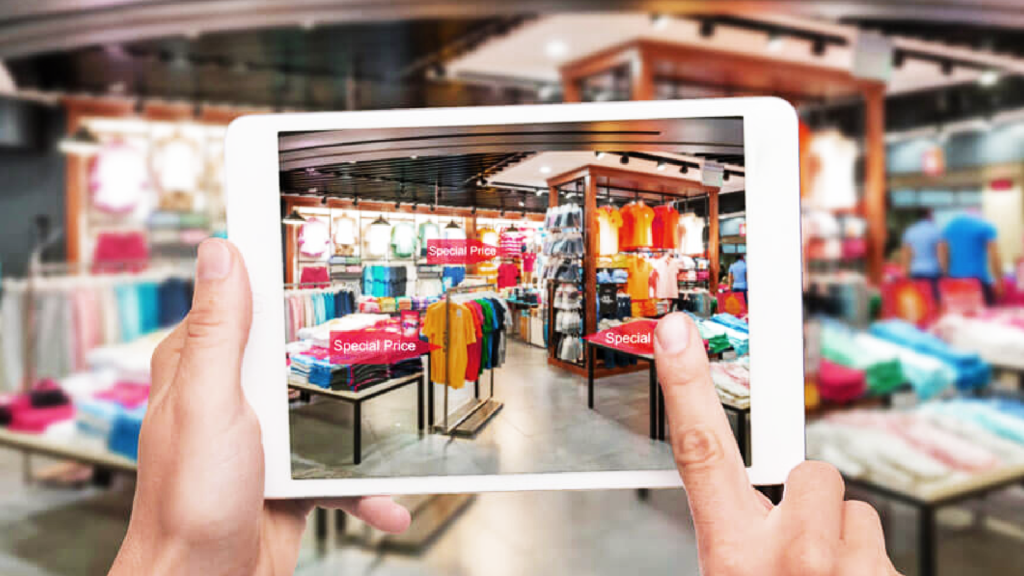As digital revolutions unfold one after another, organizations place the human factor at the core of their promotional efforts to achieve sustainable competitive advantage. Companies focus on consumer experience to strengthen the bond between their consumers, products, and corporate structure.
With today’s marketing approach emphasizing consumption and shopping experience, the use of Augmented Reality technology for marketing is increasing. Enhancing consumer experience through digital technology adds depth to shopping habits while aligning with company goals, such as providing more product information and gathering customer feedback.
AR technology is widely used in areas such as marketing, entertainment, travel, tourism, fashion, and medicine. Augmented Reality technology was later used in the advertising and entertainment industries. The biggest share of the potential of AR technology in these application areas is that it can be used in many devices and that the largest user base is smartphone users.
How Is AR Shopping Changing Customer Behavior?
According to the statistical data announced by the e-Marketer company, the number of smartphone users in the world has exceeded 2 billion people as of 2016, and it is thought that this figure increased to 2.87 billion people in 2020. Let’s look at what AR technology is and how it has evolved and the effects of this development on customer behavior.
What is Augmented Reality?
Augmented reality is a computer-generated image of the real-world environment and its contents; It is a live or indirect physical view created by enriching it with sound, image, graphics, and GPS data. This concept is briefly changing and enhancing the reality of the computer. Technology functions to enrich one’s reality. However, in virtual reality, there is a world designed and animated instead of the real world.
Virtual Try-On is Increasing Day by Day
The new generation of mobile users began to prefer Snapchat and TikTok, platforms that provide the latest tools for self-expression and personalization. Increasingly, an important and growing part of the content created and shared on these networks is the immersive ones.
Snap introduced face filters that allow the user to turn selfies into something personalized and fantastic. Many features that allow creators to bring real-world locations to life with engaging animated content set the bar for user-generated immersive content.
Facebook followed Snap and made significant strides in developing AR filters for Instagram and WhatsApp.
The Effects of AR shopping on Purchasing Habits & Strategies of Brands
With the continuous development of AR technology and the continuous increase of AR integration, some changes in customer behavior have also occurred. Virtual try-on became a part of social media and augmented reality technology started to form a large part of consumption habits.
This change has taken an important place in brand strategies as well as in consumer behavior. Each brand tried to offer augmented reality technology virtual try-on opportunities as part of online shopping.
The Effects of AR Shopping on Strategies of Brands
Augmented reality is much more than an online game. It is clear that it will be one of the major forces behind sales and marketing innovations in the coming years. By using AR, forward-looking businesses will be able to enhance the experience they provide to their customers, leading to increased business opportunities and sales.
“According to the latest figures shared by Shopify, conversion rates on product pages with Augmented Reality (AR) and 3D product display capabilities are 250% higher than pages without AR. Companies that use AR technology like Houzz state that the AR experience leads customers to purchase 11 times more and spend 3 times more time in applications. ”
Gucci App AR Integration
This shows that brands are beginning to attach great importance to AR technology and AR integration in their marketing strategies. It is clear that the shopping habits of the future are taking shape and the concept of virtual try-on has now become a part of shopping. The use of Ar technology is increasing day by day, especially in retail shopping sectors such as make-up, cosmetics, and glasses. Brands that are not a part of this change fall behind in the big race.
The Effects of AR Shopping on Purchasing Habits
The purchasing decision was quite easy in non-online shopping. The consumer could examine and buy the product he would buy with 5 sense organs. However, nowadays where shopping is online (the effect of the covid-19 outbreak is great), solutions that appeal to more senses are gaining priority. Online shopping nowadays means shopping. In this case, it is quite natural that consumers prefer options that appeal more to the senses.
We can say that some brands that do this with great success have started to see this as a need rather than an option. You can take a look at our blog post to look at the brands that successfully implement this technology today.



